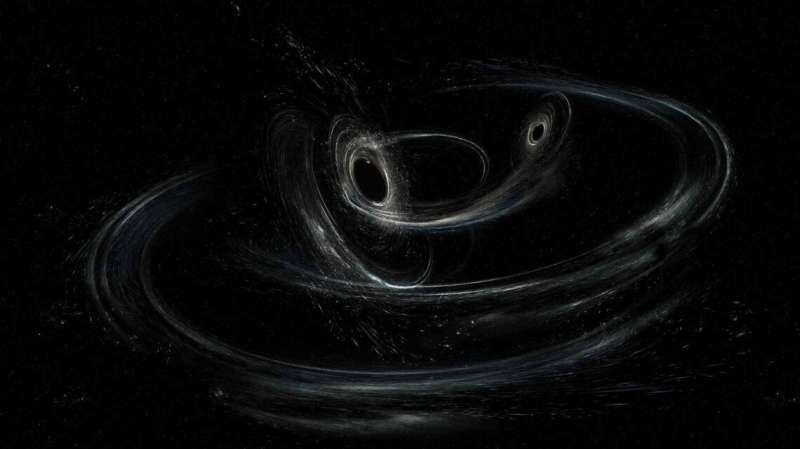This article has been reviewed according to Science X's editorial process and policies. Editors have highlighted the following attributes while ensuring the content's credibility:
fact-checked
peer-reviewed publication
trusted source
proofread
Black holes might be defects in spacetime

A team of theoretical physicists have discovered a strange structure in space-time that to an outside observer would look exactly like a black hole, but upon closer inspection would be anything but: they would be defects in the very fabric of the universe.
Einstein's general theory of relativity predicts the existence of black holes, formed when giant stars collapse. But that same theory predicts that their centers are singularities, which are points of infinite density. Since we know that infinite densities cannot actually happen in the universe, we take this as a sign that Einstein's theory is incomplete. But after nearly a century of searching for extensions, we have not yet confirmed a better theory of gravity.
But we do have candidates, including string theory. In string theory all the particles of the universe are actually microscopic vibrating loops of string. In order to support the wide variety of particles and forces that we observe in the universe, these strings can't just vibrate in our three spatial dimensions. Instead, there have to be extra spatial dimensions that are curled up on themselves into manifolds so small that they escape everyday notice and experimentation.
That exotic structure in spacetime gave a team of researchers the tools they needed to identify a new class of object, something that they call a topological soliton. In their analysis they found that these topological solitons are stable defects in space-time itself. They require no matter or other forces to exist—they are as natural to the fabric of space-time as cracks in ice. The research is published in the journal Physical Review D.
The researchers studied these solitons by examining the behavior of light that would pass near them. Because they are objects of extreme space-time, they bend space and time around them, which affects the path of light. To a distant observer, these solitons would appear exactly as we predict black holes to appear. They would have shadows, rings of light, the works. Images derived from the Event Horizon Telescope and detected gravitational wave signatures would all behave the same.
It's only once you got close would you realize that you are not looking at a black hole. One of the key features of a black hole is its event horizon, an imaginary surface that if you were to cross it you would find yourself unable to escape. Topological solitons, since they are not singularities, do not feature event horizons. So you could in principle go up to a soliton and hold it in your hand, assuming you survived the encounter.
These topological solitons are incredibly hypothetical objects, based on our understanding of string theory, which has not yet been proven to be a viable update to our understanding of physics. However, these exotic objects serve as important test studies. If the researchers can discover an important observational difference between topological solitons and traditional black holes, this might pave the way to finding a way to test string theory itself.
More information: Pierre Heidmann et al, Imaging topological solitons: The microstructure behind the shadow, Physical Review D (2023). DOI: 10.1103/PhysRevD.107.084042
Journal information: Physical Review D
Provided by Universe Today




















